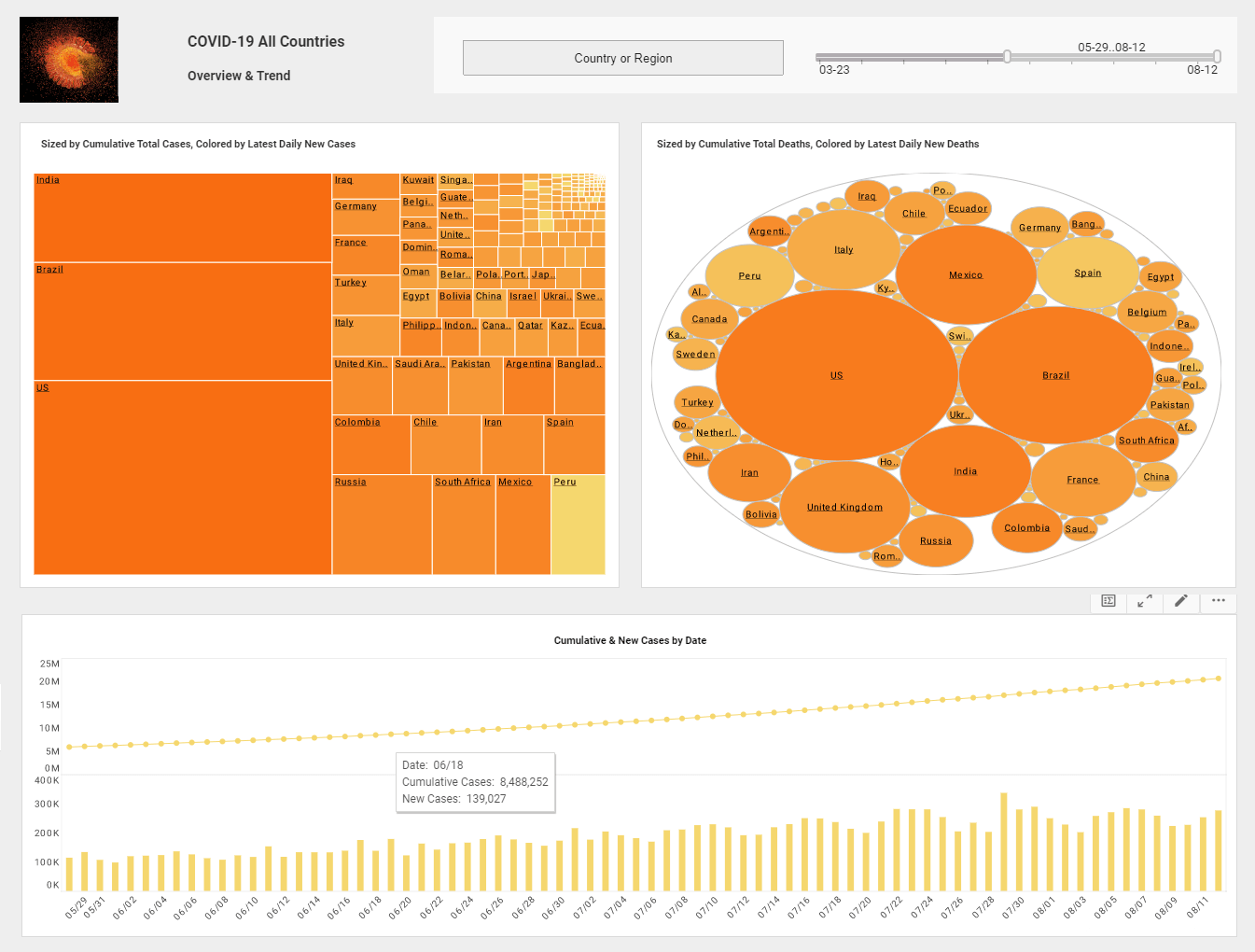The Rapid Adoption of Business Intelligence
This is the continuation of the transcript of a Webinar hosted by InetSoft on the topic of "Enterprise Intelligence." The speaker is Jessica Little, Marketing Manager at InetSoft.
But what's happening because of the rapid adoption of business intelligence, the customer intelligence and this holistic enterprise intelligence view, total spending will be down in the $30 billion range. But more importantly, the dramatic reduction in the percentage of that being spent on administrative roles will be leveraged by higher investments and technology that deliver better results.
To simplify this concept, maybe we should take a look at this as a formula. Customer intelligence is knowing everything that you can know about your customer base individually, collectively, market segments, all of those things that we have talked about under the CRM name.
Business intelligence, again, is understanding what's underlying your business, what is the data that you have, how can it be used, structured and brought together to be effectively leveraged in the business. Now, all of that is good and well, but without something that we are calling intelligent delivery, it can't be used.
| #1 Ranking: Read how InetSoft was rated #1 for user adoption in G2's user survey-based index | Read More |
What Is Intelligent BI Delivery?
Intelligent delivery will be a topic that we continue to talk about throughout this presentation in different ways. But intelligent delivery means that it is usable, pertinent, current and available to the right user at the right time. Only by combing all three of these do we get actionable knowledge. Now, this formula, what it really does is it frees information that’s been trapped in the enterprise. It improves the speed and quality of information flow throughout the enterprise, and it leverages operating cost. In other words, it enables knowledge workers in today’s world.
But the key issue about anything that you are working in on the intelligent side is that data must be mined, managed, leveraged, and adopted. And the key issue in adoption is that not everybody will use information that is given to them unless they find that it can directly help them in what they are trying to accomplish today at this very moment. And that’s when where new technologies need to play a key role in making information easily usable and available.
Another thing that we need to keep in mind is that we believe in enterprise intelligence is the glue between the marketplace and financial services. If you look on the left hand side, we talked about all the keys to organic growth, building customer loyalty through satisfaction, customer experience, customer engagement and managing the business processes associated with that.
On the far right, you see that technology has several initiatives, and again there is a process and relationship management issue that’s associated with technology as well. But we have all known for years that the business and technology sides of financial services have a challenge in communicating with each other.
 |
Read the top 10 reasons for selecting InetSoft as your BI partner. |
Develop a Common BI Language
In business intelligence, customer intelligence and knowledge management, all of these things you see on the intelligence side, it becomes a common language for technology people and business people in coming together and serving the marketplace in a better way. And again, process management is important in all three because every function within a financial institution or every function that a customer experiences has a process associated with it, and managing that process is critical to being successful in gaining and leveraging the intelligence successfully.
So what are some of the challenges involved with becoming confident in enterprise intelligence? We are not going to spend a lot of time on this because those of you in the financial services industry understand these all too well.
Pretty clearly, siloed architectures compound the ability to use information in the institution. On the right hand side from the bottom up, you can see that we have all the different product systems. We have business silos, including third parties and alliances where sometimes information is not available at all, and you have no visibility into what they are doing in their alliance capacity with you.
Delivery channels are continuing to expand, and the mobility side of things is rapidly growing on a global basis to include iPads, cell phones as well as other mobile devices that are going to be delivered in financial services and where transactions are now rapidly becoming part of the normal delivery mechanism.
| Previous: The Definition of Enterprise Intelligence |
